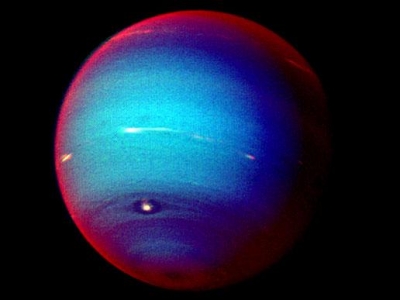
Neptune, the farthest planet in the solar system, takes more than 165 years to complete an orbit around the sun. As Neptune has an axial tilt, it experiences seasons, just like our Earth.
Sensing emitted heat : Neptune’s great distance from the sun and the longer period of revolution, however, implies that its seasons change slowly, lasting over 40 Earth years each. A new research published in April in Planetary Science Journal revealed that the temperatures in Neptune’s atmosphere have fluctuated unexpectedly over the last two decades, even though this period only represents half of a Neptune season.
An international team of researchers that included scientists from Leicester and NASA’s Jet Propulsion Laboratory used observations that effectively sensed heat emitted from Neptune’s atmosphere. They combined two decades worth of thermal infrared images of Neptune from the European Southern Observatory’s Very Large Telescope; Gemini South telescope in Chile; Subaru Telescope, Keck Telescope, and the Gemini North Telescope in Hawaii; and spectra from NASA’s Spitzer Space Telescope.
Cooler than we thought : Analysing this data allowed the researchers to reveal a complete picture of trends in Neptune’s temperatures like never before, and some of these revelations were unexpected, to say the least. Since the beginning of reliable thermal imaging of Neptune in 2003, the datasets indicate a decline in Neptune’s thermal brightness, which came as a surprise to the researchers. This means that the globally averaged temperature in Neptune’s atmosphere has come down by almost 8 degrees Celsius from 2003 to 2018, making the planet cooler than what we thought before.
The data from Neptune’s south pole, however, reveals a different dramatic change. Observations of this region show that Neptune’s polar stratosphere has warmed up by nearly 11 degrees Celsius from 2018 to 2020, reversing the previous cooling trend.
As of now, the causes for these stratospheric temperature changes are unknown and follow-up observations of the temperature will be needed to further assess these findings. Some of those causes might be revealed by the James Webb Space Telescope that is set to observe both Uranus and Neptune later this year.
Picture Credit : Google




